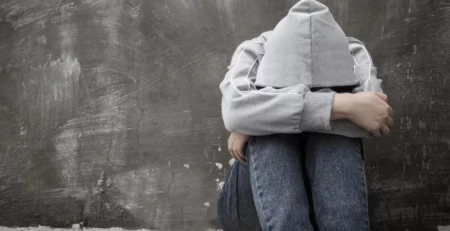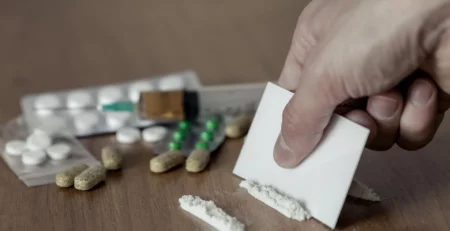What is a DBT House?
Understanding the DBT House Model and its Role in Treatment
Dialectical behavior therapy is a frequently used treatment model that assists in gaining coping skills for both addiction and mental health issues. One of the tools that many clinicians will use is known as the DBT house. But what is a DBT house, and how does it help you evaluate your current situation?
The DBT house represents the skills and support you need to live a healthy life. You have the foundation (your values), the walls (your support), and the roof (your protection). The door allows you to decide what and who can enter your home. The chimney pinpoints coping skills. Last, the billboard announces your strengths and achievements to the world.
Icarus Behavioral Health Nevada can walk you through this and many other DBT skills to help you improve your quality of life. Our experienced team is ready and waiting to welcome you to our program. For more information on the role of the DBT house, here’s what you should know about the exercise.
The Role of Dialectical Behavior Therapy in Mental Health

Entering into treatment expands your options for coping strategies and teaches interpersonal skills that you might not learn otherwise. One of the most common strategies to enhance distress tolerance is the introduction of dialectical behavior therapy.
This was originally used for borderline personality disorder but has shown promise for addiction and mental health in general. The goal is to equip clients with skills they can use when they start to feel overwhelmed and to teach them to pay attention to their own inner world.
You might already be familiar with some DBT skills, such as mindfulness and emotional regulation. A DBT client will gain many practical skills in their toolbox for coping with tough situations and feelings.
Get Effective Detox and Rehab Options at Icarus
The DBT House Model: How Does It Work?
Even if you aren’t good at art, you can benefit greatly from the DBT house model tools. This model is a visual representation of what goes on inside your mind, ultimately helping you to achieve a degree of emotion regulation and interpersonal effectiveness.
You’ll start by drawing a house with all the parts: walls, roofs, doors, chimneys, and more. Every piece of your house represents another piece of the puzzle you will work on with a therapist. Let’s take a closer look at what a person might include in their DBT house.
Foundation: Core Values to Build Upon
Just as every home is built upon a foundation, so is your DBT house. When you draw the foundation of your imaginary home, it’s meant to represent these core values. What do you want to build the rest of your life around?
If you can’t name your values, it might be time to head back to the drawing board and dive deeper into your therapy. Without a set of governing principles and values, you’ll flounder in recovery. This is your time to ensure that the rest of your house (and the rest of your life) has a firm grounding in things that truly matter to you.
Walls: Support for Interpersonal Effectiveness

The walls of your home come next. This can be a tricky piece of the model because it means that you have to start setting boundaries. The walls of a home offer support, but they also keep out the things that you don’t want in your home. You can keep those external threats outside of your DBT house with clear walls.
While you’re here, this is the time to assess your current support in recovery. Do you have a person or something else that supports you? They can help you set these boundaries and develop a greater sense of interpersonal effectiveness.
Roof: Protection from Harm
The walls were meant to symbolize who supports you, but the roof protects from some of the things you named as external threats. The roof keeps rain and inclement weather off your home, as does your DBT roof. This is the time to consider who or what will protect you when you leave the therapy room.
Do you have someone you turn to when you feel like you might self-harm? Is there someone who offers a listening ear when you need help with emotion regulation? This is the place to list the things that work together to keep you safe.
Door: Keeping Positive Things In and Negative Things Out
At this point, you’ve already engaged in several activities that have gotten you to consider your mental health and the role of other people in supporting you. The door of your DBT house takes this one step further: who do you want to let into your home? What will you share with the people who have access?
Sometimes, you might want to keep some pieces of your recovery or mental health from people who don’t make an effort to understand your situation. This is the time to think about what you may hide from the world at large, giving you a clearer idea of which relationships you value and how healthy they are.
Chimney: Stress Relief to Blow Off Steam

Think about the role of a chimney in a normal house. It allows you to burn a fire inside and blows all of the smoke out of the home. The same is true when you think about the chimney on your DBT house. It’s the place where you’ll start to consider your distress tolerance and coping strategies.
When you encounter a situation that makes you uncomfortable or causes stress, you can return to the chimney of your DBT house to see which skills you want to implement. No matter what form these skills take, they can enhance your recovery and keep you on the path toward healing.
Billboard: What You Announce to the World
In this DBT model, you’ll also have a billboard for your home. Billboards are meant to announce news to the world, whether that’s an advertisement for a new roof or a cheap meal at a burger joint. However, a billboard in this scenario is about what you want to announce about yourself to the world at large.
It’s a time to evaluate what you’re most proud of in your life. What are your accomplishments? If you can’t think of an accomplishment you want to share, think about your strengths. What would you like other people to know about who you are and what you have been through?
Gaining DBT Skills at Icarus Behavioral Health Nevada

Are you ready to dive deep into your own DBT house and start to gain more control over your emotions, addiction, or mental health? This is just one tool of many that our experienced clinicians work through with you in therapy. Icarus Behavioral Health Nevada offers the support you need to overcome these issues and create a meaningful and satisfying life.
If you think our program might be the right fit for you, our enrollment team is always ready to answer your questions. We can also verify your insurance benefits to see what will be covered.
Let Icarus Behavioral Health Nevada take those first steps toward healing with you. Reach out to us today to learn more!
Up To 100% of Rehab Costs Covered By Insurance – Call Now!
References
- May, J. M., Richardi, T. M., & Barth, K. S. (2016). Dialectical behavior therapy as treatment for borderline personality disorder. The mental health clinician, 6(2), 62–67.
- Dimeff, L. A., & Linehan, M. M. (2008). Dialectical behavior therapy for substance abusers. Addiction science & clinical practice, 4(2), 39–47.
- Peprah K, Argáez C. Dialectical Behavioral Therapy for Adults with Mental Illness: A Review of Clinical Effectiveness and Guidelines [Internet]. Ottawa (ON): Canadian Agency for Drugs and Technologies in Health; 2017 Oct 20. Available from:











